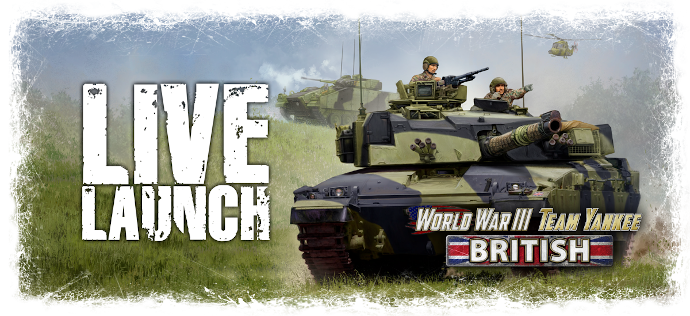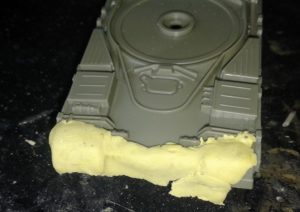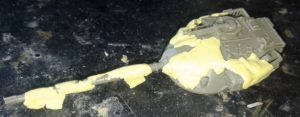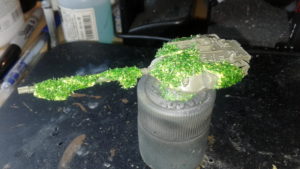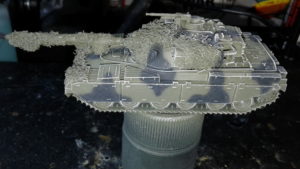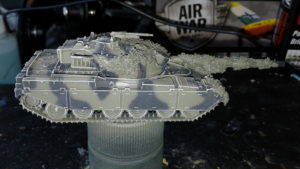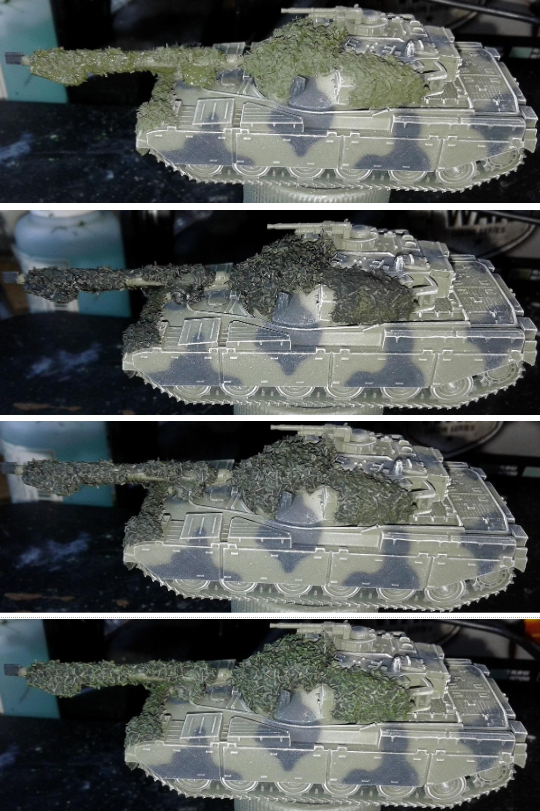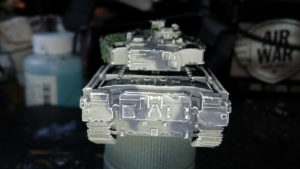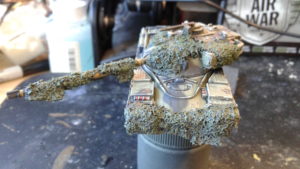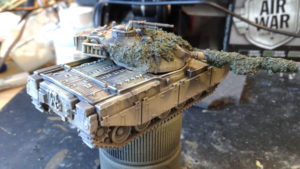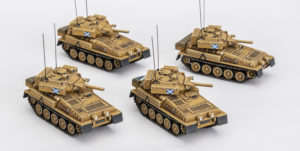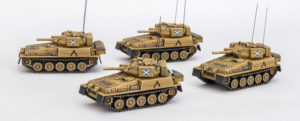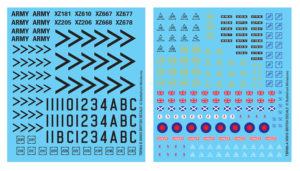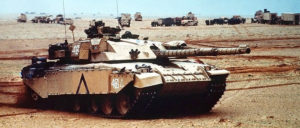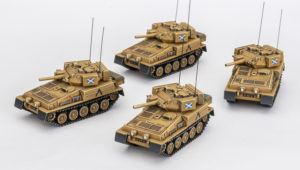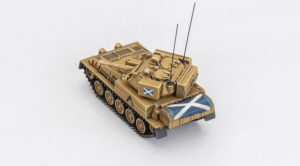with Phil Yates, Battlefront NZ
As those who’ve been reading my articles over the years will know, I have had a fascination for the 7th Armoured Division, the ‘Desert Rats’ in Normandy since I was a kid. My Late War Desert Rats force is easily the biggest part of my collection, so the obvious question is: what difference does the latest version of the rules make? I’ll look at my two formations: a Cromwell Armoured Squadron and a Motor Company, separately.
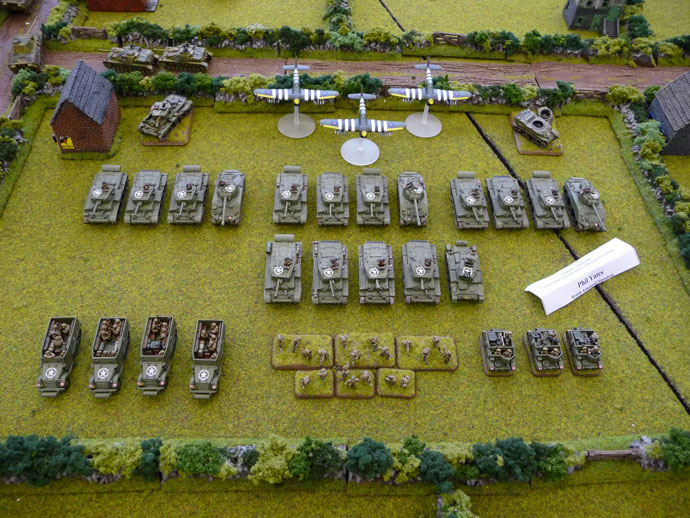
Cromwell Armoured Squadron
There are two ways to build a Cromwell Armoured Squadron in D-Day: British: the Desert Rats Cromwell Armoured Squadron and the Cromwell Armoured Recce Squadron. Since the 7th Armoured Division had both types, I could go either way, but my tanks are marked as 1st Royal Tank Regiment, I’ll go with the Desert Rats Cromwell Armoured Squadron. The main tanks in the formation are the Cromwell and the Firefly, so let’s see what’s changed.
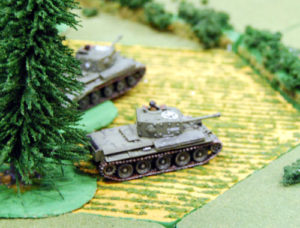
The Cromwell has the same speed and cross capability, and the same armour that it used to have, so it’s still blazingly fast and has about the same armour as a Sherman or T-34. The gun is the same as the Sherman’s 75mm, so no surprises there. The 95mm in the close-support tanks of the HQ gain a little with better Firepower and better Anti-tank and Brutal for direct-fire. The artillery Firepower improvement from 5+ to 3+ should make them a lot more lethal, especially when combined with the re-rolled saves for repeat bombardments. I’m looking forward to seeing them rip enemy anti-tank guns to pieces! Gamewise, I think the biggest difference is the ability to use their dash speed without the risk inherent in moving fast in the earlier versions of the game.
Firefly Tanks
The Firefly’s speed and armour is also the same, as is the 17 pdr gun apart from gaining an extra 4”/10cm range, which may be useful when covering a fast dash onto the flank by the Cromwells. The ratings of both types of tank are much the same. They are still Reluctant, although the Remount is now a straight 3+ rather than having the old Cautious not Stupid rule. They are Careful, so are still hit on 4+. Their Skill rating is Trained, so like most they are OK at Movement Orders like Blitz Move and Shoot and Scoot, a welcome addition in the latest version that should give me more options to do clever things.
The old British tank rule of Semi-Indirect Fire (giving a re-roll for long-range shooting) is gone, so I’ll need to be a little more circumspect in my initial shooting before the charge to close range, but I doubt that it will make that much difference.
Stuarts and Crusader A/A Tanks
My force also has Stuart light tanks and Crusader A/A tanks. The Stuart is virtually unchanged, and is still a great little Spearhead unit to help with deployment, and a sneaky unit to keep the enemy on their toes later in the game — enemy armoured cars beware, my scouts bite! The Crusader A/A has improved considerably. It’s lost a point of ROF, now ‘only’ 4, but is faster and better armoured, and most importantly has 4”/10cm of extra range making it easier to keep my tanks under its umbrella. Most importantly, it’s halved in price relative to my Cromwells, so it is much easier to include in the force!
The Verdict
A full squadron with Stuarts and Crusader A/A is now 98 points compared with 1935 points under the old version. That’s a significant reduction allowing me to field the whole squadron in a normal game! I’ve lost the Semi-Indirect Fire, but I’ve gained a whole extra troop of tanks, so I think they will perform very well thank you! I’m a happy camper so far.
Motor Company
For those who are confused by British terminology, a Motor Company is a rifle company optimised for transport in light trucks or half-tracks. Other armies might have called it a motorised or armoured rifle company or something similar, but not the British!
Like my armoured squadron, my Desert Rats Motor Company has the works as far as the formation is concerned. It’s got three small infantry platoons, three universal carrier scout patrols, two 6 pdr anti-tank platoons, a Vickers MMG platoon, and a pair of 3-inch mortars, backed up with two platoons of M10 (17 pdr) SP anti-tank guns. The most noticeable change up front is that the armoured transports aren’t in the D-Day: British book. Instead, they are available through command cards. While I appreciate the flexibility of not having to take the transports, I have found them so useful in the past that I probably will continue to take them.
What’s Changed
So what else has changed? Well the most noticeable change (and the fact that it’s so minor shows how little has changed) is an extra 4”/10cm range on my 6 pdr anti-tank guns. This could be useful on occasion, but as I use the M10 SPs for long range shooting and position the 6 pdr guns for survivability and to protect the infantry, I doubt it’ll make that much difference.
Another change is that the choice of how my Vickers MMGs deploy is now part of building my force. I have to choose whether they will be mounted on their carriers or on foot and that’s how they stay. I’m going to have to experiment to see which works better for me. At the moment, I’m tempted to keep them mounted.
My M10 (17 pdr) SP anti-tank guns have picked up an extra point of front armour and 4”/10cm more range, and like all SP guns, lost a bit in assault capability — something I won’t miss!
The pair of 3-inch mortars gain from the new artillery rules, particularly the re-rolled saves from repeat bombardments, so that makes me happy. Oh wow! I just realised that their Firepower went up from 6 to 4+, making them three times as deadly — watchout enemy anti-tank guns and machine-guns!
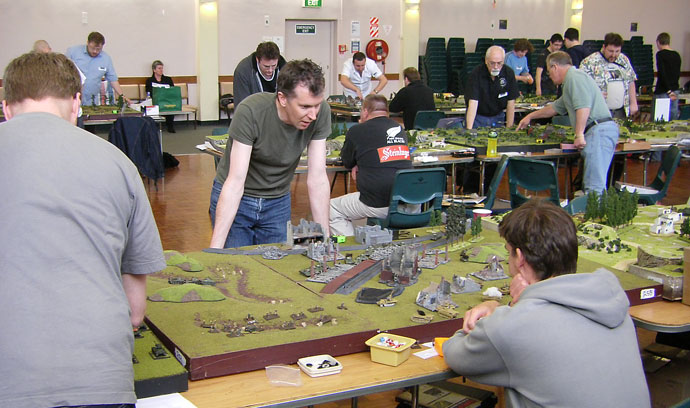
The Verdict
A company with the M10s and transports is now 88 points compared with 1850 points under the old version. Once again, that’s a significant reduction. Combined with a few performance boosts. I’m happy there as well.
Support
The only support I have so far are a flight of Typhoons and some unpainted Sexton SP artillery. The Typhoons haven’t changed much aside from a little extra range on their rocket bombardment (and fortunately I have a spare painted from earlier versions, so I’m set for the change from one to two aircraft models in the unit). That extra range might be useful at times for avoiding anti-aircraft fire. The Sextons are a command card that modifies the Priest Field Troop in the book, and like all artillery, they gain a bit of extra effectiveness. I think I might finally have to get them painted to support my motor company!
In Closing
I’ve placed or won in tournaments with both formations, and I look forward to a lot more gaming using them in the new version. I don’t think they’ll play particularly differently, but I look forward to finding out! Whatever the differences, it’ll be good to get them back on the table again.
With not much change needed to my existing force, I’m tempted to start a force of Churchill tanks and modify my motor company into a rifle company. Hmmm, the new Wasp flame-throwers look good. Hey, I could add Crocodile flame tanks as well… hey Chris, can I place an order!

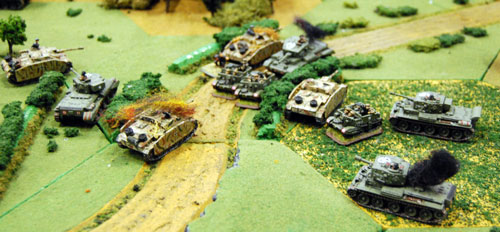

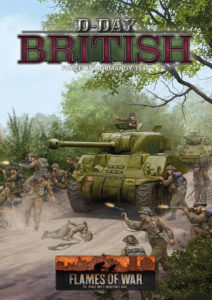 On June 6th, 1944 the Allied forces launched one of the largest amphibious assaults ever. This book follows the British and Commonwealth forces that overcame the German defences and claimed Sword, Gold, and Juno beaches as well as the breakout after. The forces in the book are broken down into three major groups: you have your regular war weary units that form the backbone of your forces, you have your Desert Rat veterans and lastly you have your elite troops like the Commandos and Airborne units. These options are perfect to build any list for D-Day and the breakout.
On June 6th, 1944 the Allied forces launched one of the largest amphibious assaults ever. This book follows the British and Commonwealth forces that overcame the German defences and claimed Sword, Gold, and Juno beaches as well as the breakout after. The forces in the book are broken down into three major groups: you have your regular war weary units that form the backbone of your forces, you have your Desert Rat veterans and lastly you have your elite troops like the Commandos and Airborne units. These options are perfect to build any list for D-Day and the breakout.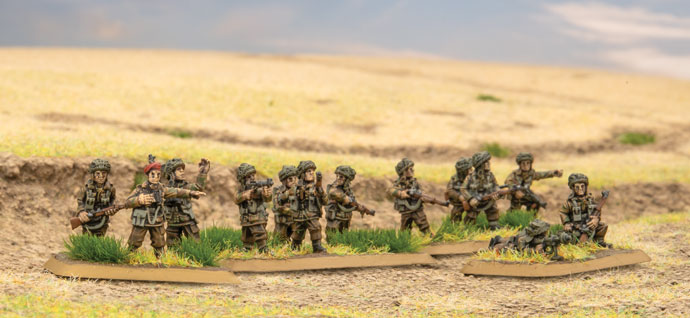
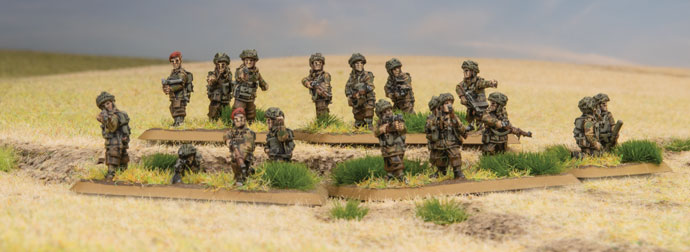
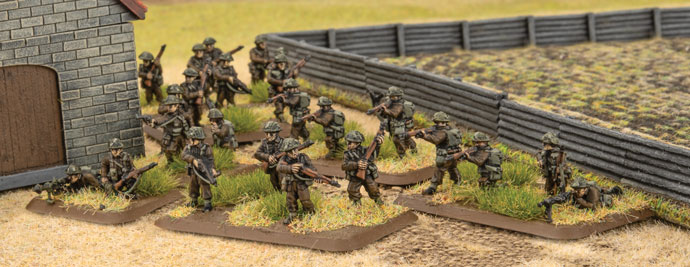
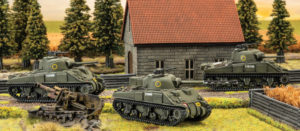
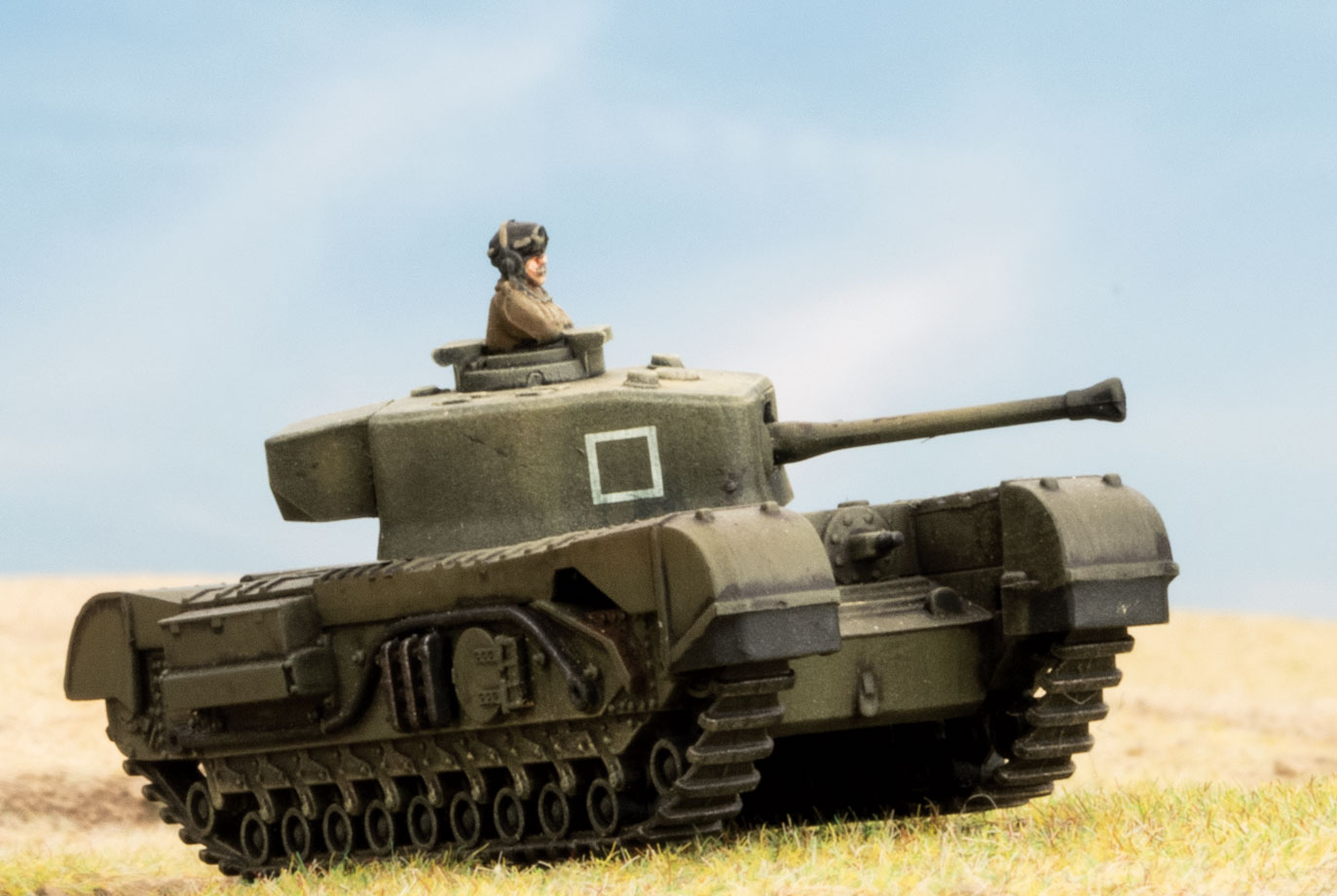 Churchill Armoured Squadron
Churchill Armoured Squadron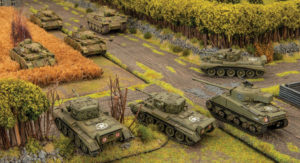
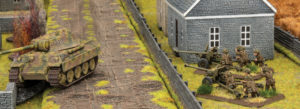 How Do The British Play?
How Do The British Play? Normandy Campaign Missions
Normandy Campaign Missions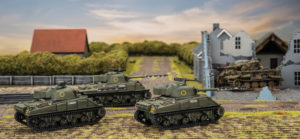 Richard. Pine-Coffin
Richard. Pine-Coffin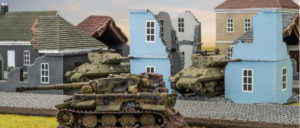 Command Cards
Command Cards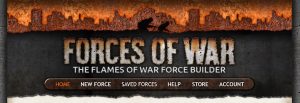
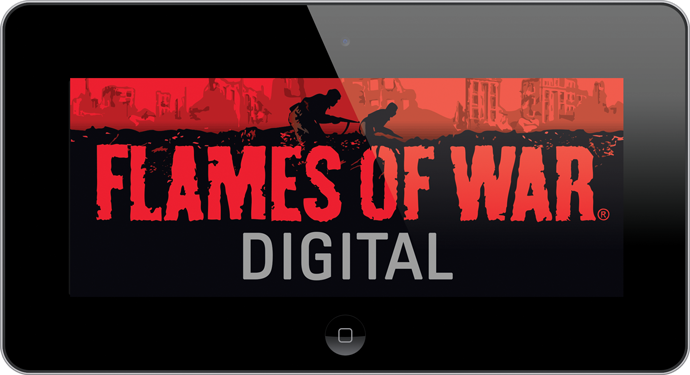
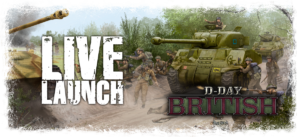
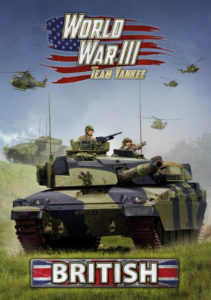 Thanks for joining us for the WWIII: British Live Launch. You can find all the content from the weekend here:
Thanks for joining us for the WWIII: British Live Launch. You can find all the content from the weekend here: